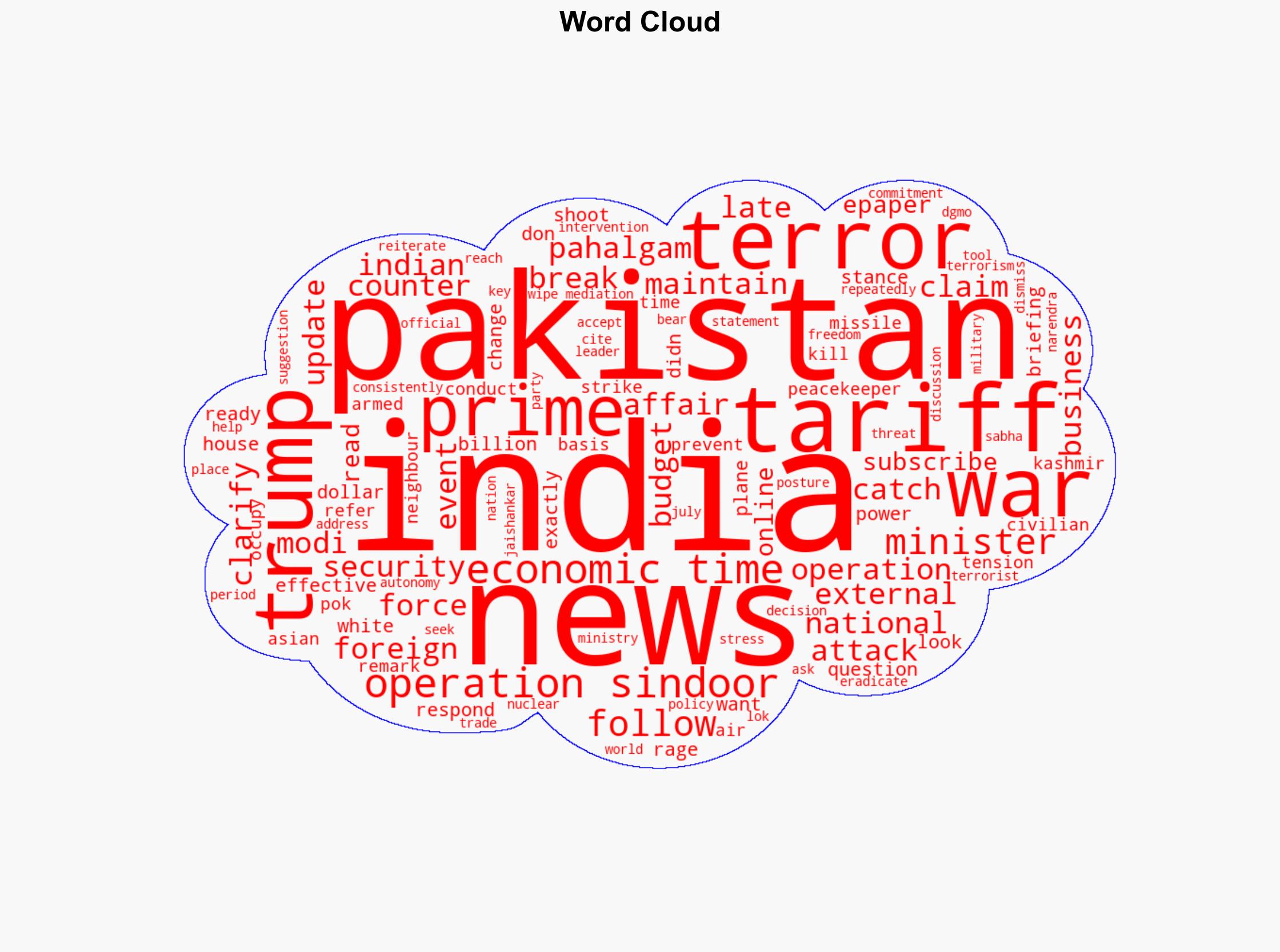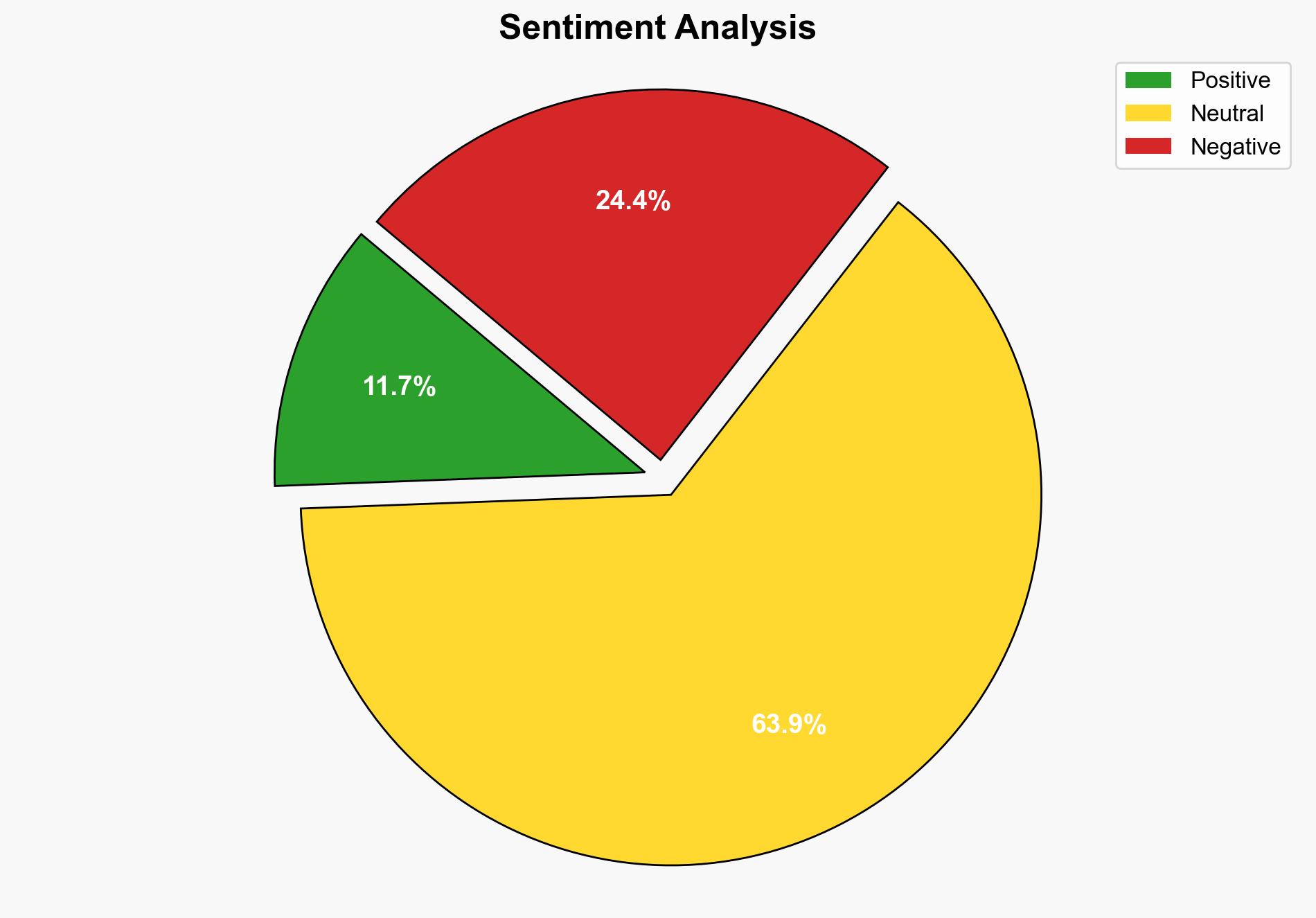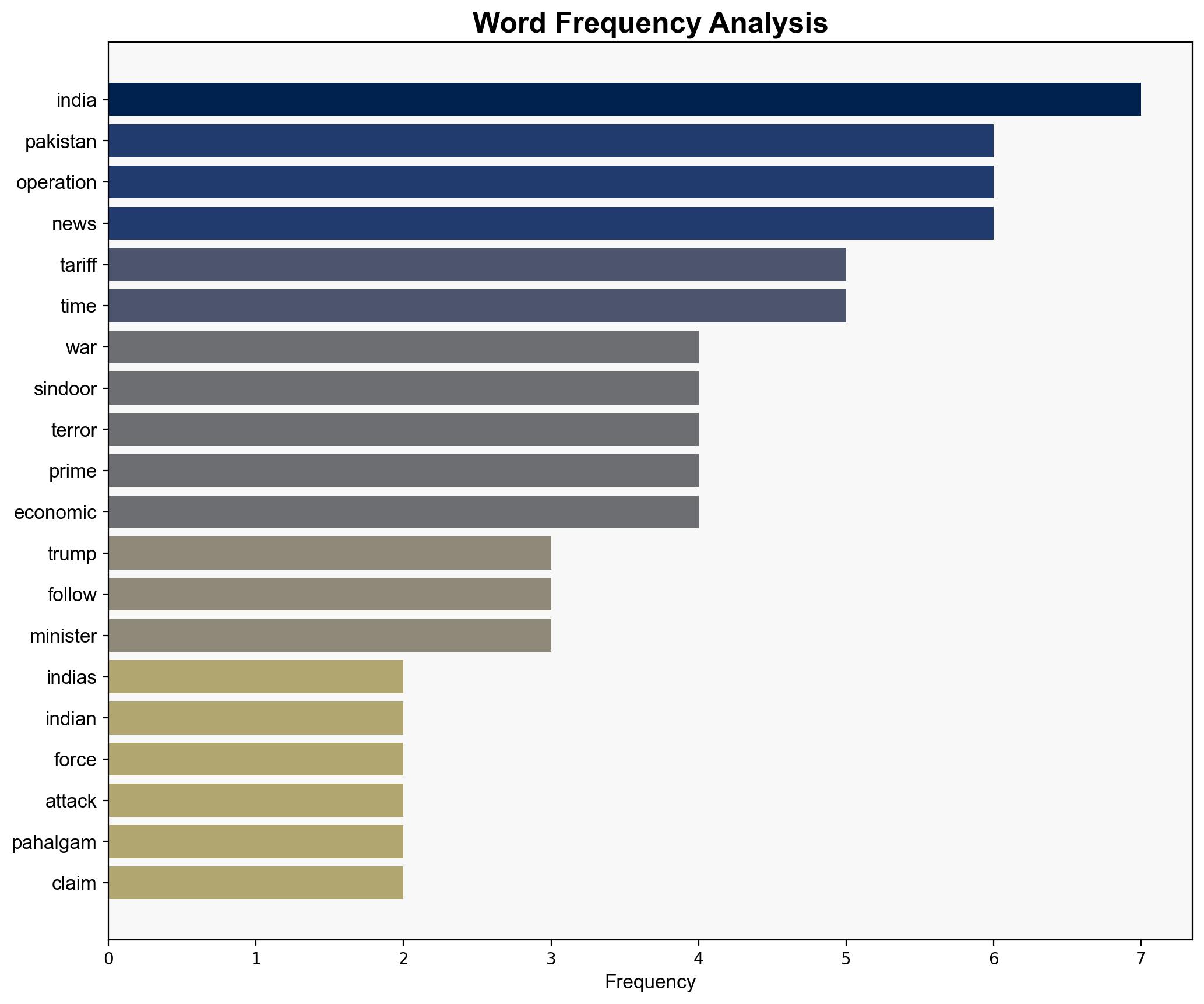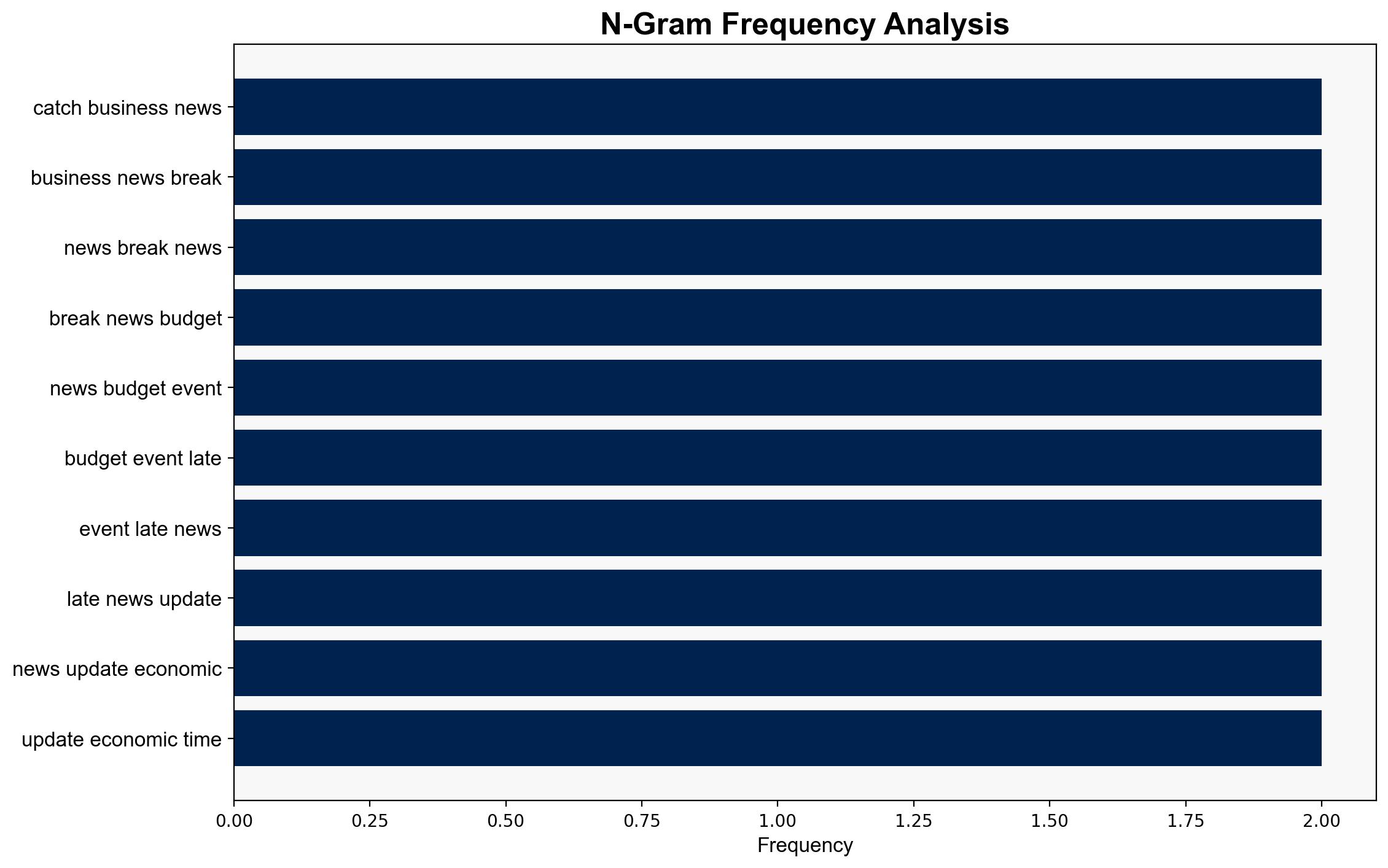Trump claims his tariff power helped avert India-Pakistan war says seven planes were shot down – The Times of India
Published on: 2025-10-07
Intelligence Report: Trump claims his tariff power helped avert India-Pakistan war says seven planes were shot down – The Times of India
1. BLUF (Bottom Line Up Front)
The analysis suggests that the claim by Trump regarding his tariff power averting a war between India and Pakistan is not strongly supported by available evidence. The hypothesis that India’s autonomous military decisions were the primary factor is more credible. Confidence level: Moderate. Recommended action: Monitor regional tensions and verify claims of foreign intervention in national security matters.
2. Competing Hypotheses
1. **Hypothesis A**: Trump’s tariff threats played a significant role in preventing a full-scale war between India and Pakistan.
– **Supporting Evidence**: Trump’s assertion of using tariffs as a foreign policy tool; historical use of economic pressure to influence international relations.
– **Contradictory Evidence**: India’s consistent dismissal of foreign intervention; statements from Indian officials emphasizing autonomy in national security decisions.
2. **Hypothesis B**: India’s military strategy and autonomous decision-making were the primary factors in managing the conflict with Pakistan.
– **Supporting Evidence**: Statements from Indian officials and Prime Minister Modi; India’s historical stance on national security autonomy.
– **Contradictory Evidence**: Lack of explicit acknowledgment of external influences during the period in question.
Using ACH 2.0, Hypothesis B is better supported due to consistent statements from Indian authorities and the absence of corroborative evidence for Hypothesis A.
3. Key Assumptions and Red Flags
– **Assumptions**: Hypothesis A assumes that economic threats can directly influence military decisions, which may not apply uniformly across different geopolitical contexts.
– **Red Flags**: The lack of independent verification of Trump’s claims; potential bias in attributing outcomes to economic measures without clear causal links.
– **Blind Spots**: Limited insight into internal decision-making processes within the Indian government and military.
4. Implications and Strategic Risks
– **Geopolitical Risks**: Misinterpretation of foreign influence could escalate tensions or lead to miscalculations in future conflicts.
– **Economic Implications**: Overreliance on tariffs as a diplomatic tool may strain international relations and economic partnerships.
– **Psychological Dimensions**: Public perception of foreign intervention could impact national morale and trust in government decisions.
5. Recommendations and Outlook
- Enhance intelligence sharing and verification mechanisms to accurately assess foreign influence in regional conflicts.
- Scenario Projections:
– **Best Case**: Strengthened diplomatic channels reduce tensions and prevent escalation.
– **Worst Case**: Misinterpretations lead to increased militarization and economic retaliation.
– **Most Likely**: Continued regional tensions with sporadic diplomatic engagements.
6. Key Individuals and Entities
– Donald Trump
– Narendra Modi
– External Affairs Minister Jaishankar
7. Thematic Tags
national security threats, geopolitical strategy, economic diplomacy, regional focus




